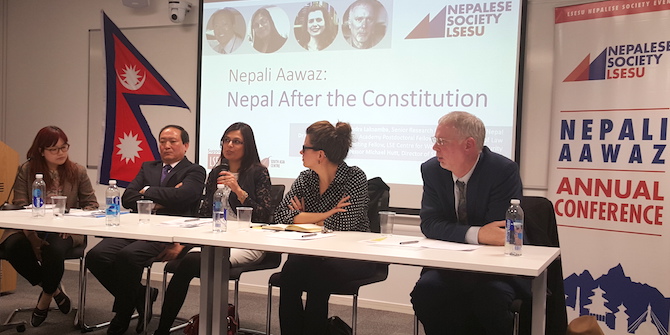In the last few years, China has increased its geo-political influence in South Asia through its systematic investments in infrastructure and trade agreements in the region. From the China-Pakistan Economic Corridor (CPEC) and the proposed project of a Bangladesh-China-India-Myanmar Economic Corridor (BCIM) to the 99-year lease of Sri Lanka’s port of Hambantota, China has marked its presence significantly. To encourage debate ahead of the summit panels ‘Is China South Asia’s Principal Ally?’ we present our top articles, including interviews with two of our panellists, on Sino-South Asia relations. You can read more about the upcoming panels here.
Interviews
Sonali Campion interviews Ganeshan Wignaraja to discuss the opportunities and barriers to greater regional integration, with a specific focus on the South Asian countries.
Rahul Roy-Chaudhury, Senior Fellow for South Asia at the International Institute for Strategic Studies (IISS), talks to Mahima A. Jain on India’s foreign policy, its involvement in Afghanistan, the difference in the operational styles of R&AW and ISI, and India’s approach in the Indian Ocean region.
Pakistan
China-Pakistan Economic Corridor: Towards a New ‘Heartland’?
Omar Alam discusses the proposed China-Pakistan Economic corridor, China’s largest overseas investment project to date. The corridor, if managed effectively, presents a win-win scenario for Islamabad and Beijing, but also has extensive geopolitical implications that could shift the centre of global politics.
Understanding CPEC: Without tax reform economic growth will simply increase inequality
The benefits of the China-Pakistan Economic Corridor have been widely celebrated by Pakistan’s politicians and media alike but the reality is there is very little information about the details available. Asad Abbasi argues that even if the Chinese investment delivers the growth Pakistan is hoping for, inequality will rise unchecked unless redistributive reforms are introduced.
Sri Lanka
Chinese tourist numbers in Sri Lanka: a case for improving growth
Despite the growth in Sri Lanka’s tourism industry fuelled by increasing tourist arrivals from China since 2009, the number of Chinese tourists remains negligible when compared to numbers of Chinese tourists travelling to other countries. Sri Lanka can and should take concrete steps to multiply its incoming tourists from China.
N.R Ravindra Deyshappriya writes.
Will Sri Lanka manage to perform the balancing act between China and India?
Given the strategic competition and growing rivalry between China and India, it is inherently in the island’s national interest to have a balanced approach while dealing with the two powers. As China exerts more power in South Asia, raising India’s concerns of a ‘Chinese Threat’, Sri Lanka needs continue to be on good terms with both nations writes Shakthi De Silva.
China is Sri Lanka’s biggest source of FDI, but there is room for more
Chinese investment in Sri Lanka has grown significantly in the last five years but it continues to remain low as a share of GDP and in comparison to other countries in the region. In this article, N.P. Ravindra Deyshappriya analyses China’s spending, and discusses how policymakers in Sri Lanka could expand FDI inflows from its East Asian neighbour.
India
India’s Act East Policy: But What About China?
With the changing climate in contemporary international relations as well as domestic politics in India, it is important to take a closer look at new developments in India’s foreign policy. Vaishnavi Mulay explores the transformation of the Look East policy into the Act East policy and its implications for India and China.
India should reconsider its decision not to participate in the Belt and Road Initiative
Following India’s decision not to attend the Belt and Road Initiative Conference in Beijing last month, Nafees Ahmad discusses the objections which may have motivated the boycott.
Bhutan
Running hot and cold: Bhutan-India-China relations
What will the new year bring for the three countries? Even though the Doklam issue was solved peacefully, its occurrence shows that a frozen conflict can run hot now and again. Looking ahead, the new year may bring new challenges, a continued status quo, and/or new opportunities writes Sarina Theys.







